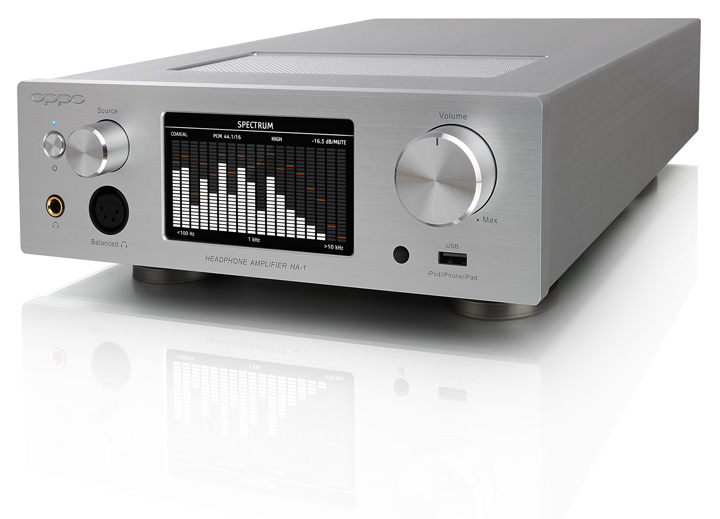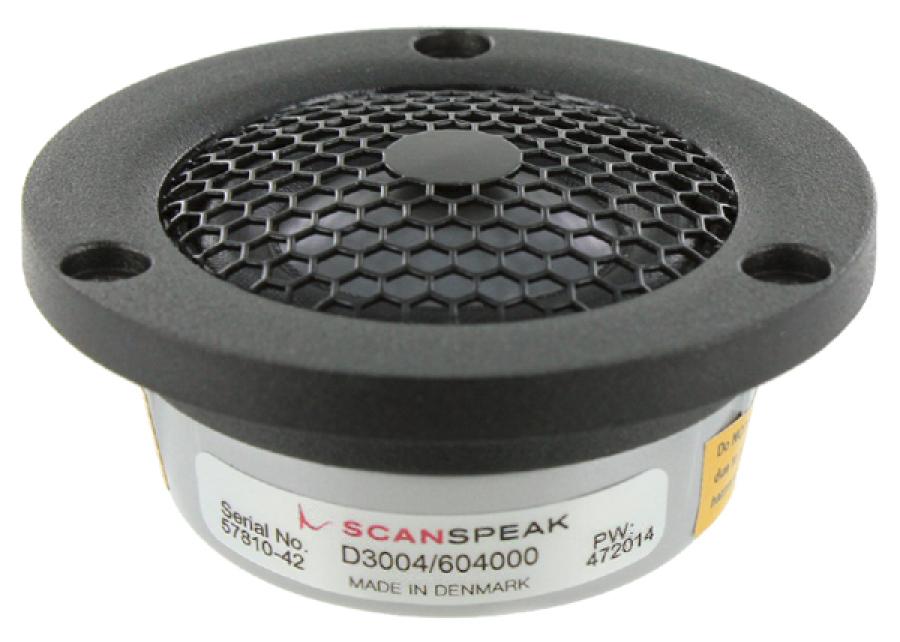What is a Ground Loop?
It is video noise or audible hum that plays through your speakers that occurs when multiple ground points with slightly different potentials are connected together through your equipment. More on this is available from Jensen Transformer's web site. It's called a loop because it's actually that, a closed circuit. All we have to do is either connect everything to the same ground, or break the loop in the safest and most convenient location.A clue to a ground loop is that the hum stays constant whether you play music or video or not. Sometimes equipment such as a TV doesn't even have to be on to help cause in the loop.
Note that this is not mechanical hum. If you hear the chassis or transformers vibrating and making more of a buzzing sound your problem is more likely DC on the line. I'll cover that in another post, but this is often caused by PCs, light dimmers, and modern compact florescent bulbs.
Ground Loops and Digital Signals
The usual "scientific" belief is that digital signals are immune or at least very resistant to noise. While it is true that digital circuits are resistant to many types of noise these circuits, including digital video, can participate in a ground loop which can cause enough jitter to be audible or visible. This includes HDMI, coaxial and USB circuits. Optical digital connections however are completely immune to all external noise, including ground loops.Ground loops will not occur in Ethernet cabling unless there was a fault in the switches / routers. In other words, almost never since preventing ground loops was part of the design of the entire Ethernet eco-system.
Diagnosing the Cause
There are a few common culprits:- Cable TV or Satellite Dishes
- External antennas like FM or television
- Audio or video cables from a Personal Computer
- Laptops! (Problem goes away when you disconnect USB or charger) See USB fixes, below.
Lethal Fixes and Myths
 One type of fix can be lethal to you and your neighbors. That's a "cheater plug like this one. Any attempt to defeat the ground pins in equipment that has them may be lethal. Do not do it. Do not rely on signal grounds to work the same way. They don't.
One type of fix can be lethal to you and your neighbors. That's a "cheater plug like this one. Any attempt to defeat the ground pins in equipment that has them may be lethal. Do not do it. Do not rely on signal grounds to work the same way. They don't.Pangea originally sold "high end" IEC cables with removable ground pins. Don't buy them, don't let your friends buy them. They appear to be discontinued, probably due to safety concerns. There is now a 2 conductor C7 version with a removable pin, but that's perfectly safe, and the feature is kind of useless.
I recently heard this argument:
I've been removing ground pins for years and never had a problem.The problem is these pins are like safety belts. So imagine me telling you this:
I've not had a car accident in 20 years, so I no longer wear a seat belt.That should sound dangerous to anyone who drives a car. That's how we electrically minded people think when we hear of audiophiles removing ground pins for that last bit of audio nirvana. There are better and safer ways. Another myth, spread by audiophiles who do not understand the safety ground or the life safety issues involved in UL certification and the National Electric Code:
Your system will be grounded by your RCA cables. No problem!If no problem means dead and on fire, they're right.
Free Fixes
If your problem is caused by a piece of audio/video gear, try connecting it all to the same power strip or conditioner. This ensures all the ground wires are at the same potential.Another free fix may be to use XLR cables. XLR cables are not usually quieter in homes than balanced, BUT! there is a difference. XLR cables don't mix the ground and signal together. You avoid this contamination and XLR inputs often have a safe "Ground Lift" switch. It prevents the grounds loop from occurring at all.
Not A Ground Loop
Some issues have nothing to do with ground loops but are caused by induced noise from other sources. This noise can come through the power lines OR be induced by proximity to interconnects and electronics. Things to try turning off, disconnecting, or removing from the environment:- Compact Flourescent bulbs - VERY noisy!
- Wall warts - These tricky bastards stay on, and polluting even if the device they are feeding is off.
- Wall dimmer switches
- PC and laptop power supplies (yes, again!). Disconnect your PC or laptop cables to your stereo, TV, etc. If the problem comes and goes with the PC/laptop being plugged in, then you have a noise problem and will need to relocate it.
- WiFi devices, including routers, streamers, receivers, modems, etc. If your Wifi device is part of your stereo, try moving the antenna or putting it on a different power strip/conditioner.
Noiseless Cables
Sometimes the problem is noise our cables pick up. Especially problematic in apartments with a heavy concentration of WiFI signals or near transmission or cellular towers. Some electronics will help pick this up more than others.Make sure your interconnects are 100% shielded. Most cheap and a lot of expensive RCA cables use a braided ground, which is more of a pick-up antenna than anything else. Regardless of whether you use RCA or XLR cables, the best use 2 conductors plus a foil shield. In essence they are built of conductors:
- Positive conductor
- Negative conductor
- A super thin and delicate foil shield
- The drain wire which is used to attach the foil to a ground conductor on the RCA or XLR jack
My favorite brands for non-esoteric cables:
- DH Labs
- Connex
- Mogami
- Belden
Cable TV & Antenna Problems
 This problem can also cause Internet access issues. I use a dedicated Cable TV isolator like this one. You put it immediately inside the RF plug, unless you have a satellite dish. More on that, below.
This problem can also cause Internet access issues. I use a dedicated Cable TV isolator like this one. You put it immediately inside the RF plug, unless you have a satellite dish. More on that, below. Satellite Dishes
Make sure the satellite dish cable is grounded before entering your home. Even though it is required by code, installers often fail to do this, and ends up in having your receiver or antenna getting fried by heavy wind causing static as it blows across the dish.Unlike Cable TV and overhead local antennas, satellite dishes require DC power to operate the RF amps built into the little head. For this reason isolating them is a little trickier. Normal isolators block DC in all forms.
The trick is to buy a separate DC power supply for your antenna. Place the ground loop eliminator closest to your receiver, and your antenna power supply closer to the antenna.
HDMI
Your best / cheapest way to eliminate issues from your television over HDMI are to fix any connections going to it such as cable tv, satellite, a PC, etc.USB/DAC
Early in the history of external DACs ground loops could occur through coaxial cables. Most good DAC's today provide what is called "galvanic isolation" meaning that there is no DC or ground loop path between the input plugs and the rest of the circuits in a DAC. This can be done by purpose built transformers or modern monolythic IC's. Unfortunately no magazine or agency I know of tests for this so there is no way to 100% guarantee a DAC's isolation. Of course, the way to test this is to disconnect your USB input and see if your hum goes away. There are also cases where you have very little ground loop noise. To fix either use a USB isolator like this inexpensive model designed for medical professionals, but works just as well with USB 2.0 DACs. Another fix is to use a purely optical cable between your source and DAC such as the Audioquest Forest or Monoprice both of which come in a variety of lengths. Check the size of the plugs, some may interfere with other sockets on your equipment. Optical cables are also a very good choice for going from PC to a DAC or receiver if the PC supports it since PC's are such noisy environments.
Another fix is to use a purely optical cable between your source and DAC such as the Audioquest Forest or Monoprice both of which come in a variety of lengths. Check the size of the plugs, some may interfere with other sockets on your equipment. Optical cables are also a very good choice for going from PC to a DAC or receiver if the PC supports it since PC's are such noisy environments. Of course, since the entire point is to avoid a current path, gold plated optical cables are kind of silly.
Audio Signal Isolators
 Audiophiles hate putting anything in the signal path, and some fussy recording engineers may also, but pro's also know that it's far better to put in a transformer than delaying a show, so here are a couple of isolation products from Ebtech that are reasonably inexpensive.
Audiophiles hate putting anything in the signal path, and some fussy recording engineers may also, but pro's also know that it's far better to put in a transformer than delaying a show, so here are a couple of isolation products from Ebtech that are reasonably inexpensive.I'm currently working on Cable Mittens, a new concept to warm up the sound of an amplifier while breaking ground loops and reducing noise. Until then, the choices below are the best available!
The Hum Eliminator takes 1/4" jacks, but adapters are easily found. For a little more you can get the XLR version shown here.
The EbTech models, especially at their prices, are very good, but audiophiles who only want the very best turn to Jensen Transformers for the gold standard in high quality audio isolation. If that's what you need, I present the RCA Jensen Iso-Max for your approval. It's usually the best solution for PC audio problems.
The XLR Iso-Max, below, is also available for around $250.
Last Ditch Efforts
 If your problem is your electronics and the single
power strip idea doesn't work, the only remaining almost safe way to prevent the problem
I know of is the Ebtech Hum X. The
Hum X is only rated for 6A which limits it to line level electronics.
You cannot use it on power amps, which is not really a problem because
we can prevent the ground loop at either end. You will find it just as
effective by putting this on a preamp, TV or source as on the amps. It
should also be effective on PCs, but I'm not sure if it could cause
other problems.
If your problem is your electronics and the single
power strip idea doesn't work, the only remaining almost safe way to prevent the problem
I know of is the Ebtech Hum X. The
Hum X is only rated for 6A which limits it to line level electronics.
You cannot use it on power amps, which is not really a problem because
we can prevent the ground loop at either end. You will find it just as
effective by putting this on a preamp, TV or source as on the amps. It
should also be effective on PCs, but I'm not sure if it could cause
other problems.I say it's "almost safe" because it has not yet been UL approved. The 6A rating is probably why, as there's no way to guarantee users will only plug-in 6A devices.
Iffy Solutions
If you are an audiophile you might have gotten to the end of this article wondering why the real "power conditioners" weren't mentioned. The truth is that the solutions provided above are the most effective in solving ground-loops than almost any high-end power conditioner. Balanced power conditioners, which are often touted as the best solution for this, may or may not fix actually fix a ground loop problem. Bill Whitlock and Jamie Fox of Jensen wrote a great paper for the Audio Engineering Society on the matter. Balanced conditioners ARE completely effective at removing DC from an AC line however, and very effective at reducing other types of incoming AC line noise.Other types of power conditioners will have no effect at all on ground loops but may reduce other types of noise or provide surge protection and, as mentioned, connecting all your electronics to a single strip or conditioner may also eliminate the problem but don't go spending big bucks on them trying to fix ground loop issues, or ignore the solutions above because they don't seem high-tech or expensive enough.
























